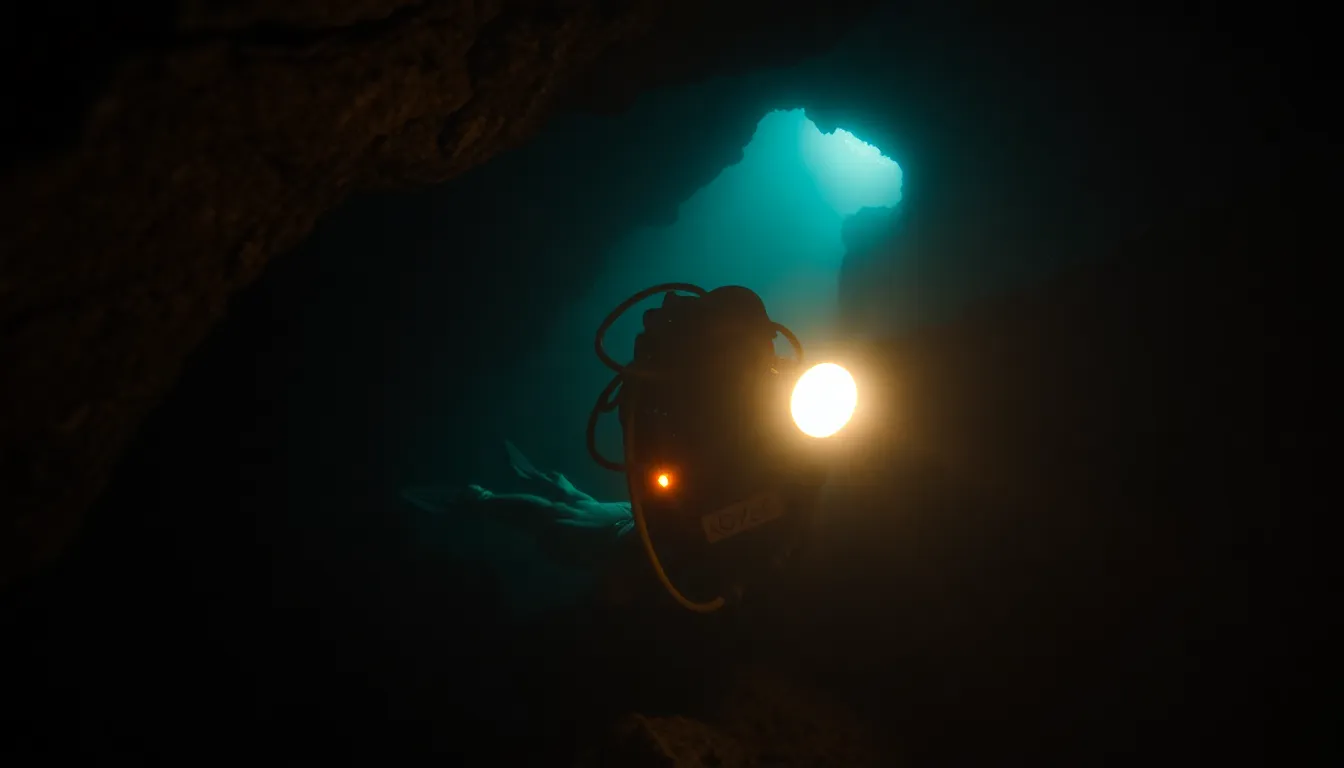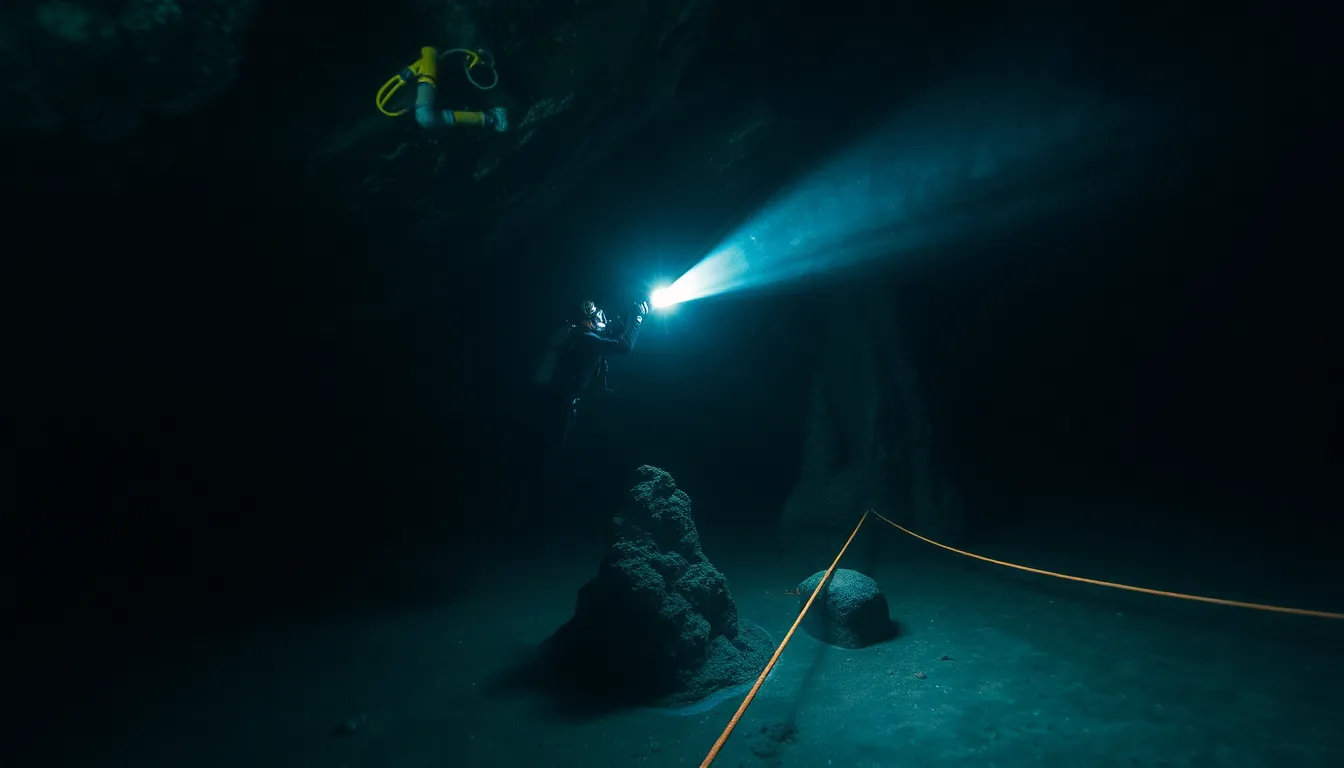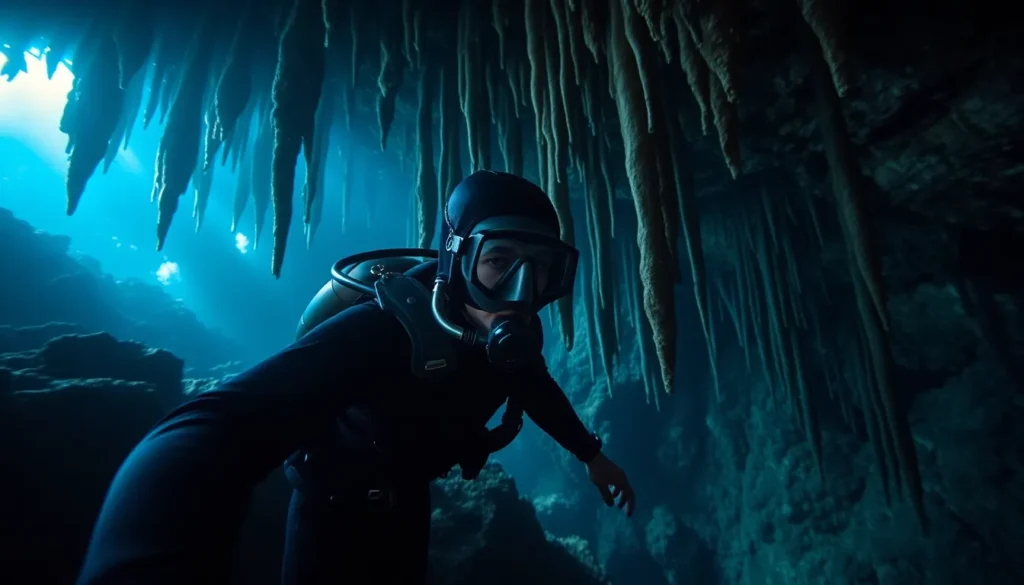Table of Contents
ToggleDiving into the depths of Anglehozary Cave might sound like an exhilarating adventure straight out of an action movie. But before anyone grabs their gear and dives headfirst into the unknown, it’s crucial to consider the lurking dangers. This underwater labyrinth isn’t just a playground for thrill-seekers; it’s a realm filled with unpredictable twists, turns, and potentially life-threatening surprises.
Overview of Anglehozary Cave Diving
Anglehozary Cave diving presents unique challenges and risks. Submerged passages obscure visibility, making navigation difficult for divers. Uneven terrains and tight spaces increase the likelihood of disorientation. Entrances to the cave can often hide treacherous depths or swift currents.
Pressure changes impact both breathing and buoyancy, demanding careful management of air supply. Sudden descents may lead to serious decompression issues. Visibility can drop unexpectedly, exacerbating the dangers faced during exploration. Unexpected obstacles such as rock formations can lead to injury or entrapment.
Wildlife inhabiting these caves can pose further threats. Some aquatic species exhibit defensive behaviors when disturbed, and venomous creatures may lurk in hidden crevices. Knowledge of these factors is crucial before attempting a dive.
Training and preparation are paramount for safe exploration. Divers should possess experience in technical diving and prioritize safety protocols. Comprehensive planning encompasses understanding local conditions and assessing dive objectives.
In addition, advanced equipment aids in mitigating risks. Using redundant systems for air supply and communication improves overall safety. Awareness of weather patterns and water conditions prevents undertaking dives during adverse conditions.
Exploring Anglehozary Cave requires cautious consideration of inherent dangers. Recognizing potential hazards significantly lowers risks. Each dive demands respect for the environment and preparation for the unpredictable nature of the cave.
Common Risks in Cave Diving


Cave diving at Anglehozary carries several inherent risks that divers must recognize and prepare for. The environment poses significant challenges, requiring experience and caution.
Limited Visibility
Limited visibility presents a major challenge in Anglehozary Cave. Murky waters often obscure vision, making it difficult to navigate submerged passages. Divers may experience confusion and disorientation when unable to see beyond a few feet. Visibility can change rapidly due to sediment disturbance or water flow, increasing the risk of getting lost. Staying close to guiding lines or markers remains essential. Effective light sources, such as high-intensity dive lights, assist divers in spotting obstacles and finding safe routes. It’s crucial to practice navigation techniques in low visibility to reduce panic and maintain control.
Unpredictable Water Conditions
Unpredictable water conditions add another layer of danger in cave diving. Sudden changes in currents can occur without warning, making it challenging to maintain a stable position. Divers often encounter swift water flowing through constricted spaces, which may pull them off course or towards hazardous areas. Pressure changes also affect buoyancy and may lead to complications like buoyancy loss or uncontrolled ascent. Understanding local water dynamics is vital for anticipating these conditions. Divers should monitor weather patterns and be prepared for abrupt shifts. Recognizing how to respond to these changes ensures better safety and a more controlled dive experience.
Psychological Factors
Cave diving at Anglehozary involves significant psychological challenges. Divers often face intense situations that can trigger fear and anxiety.
Panic and Stress Reactions
Panic can strike when divers find themselves in confined spaces. Such a reaction may lead to irrational decision-making and increase the risk of accidents. Stress also complicates breathing, which can lead to rapid oxygen depletion. Knowing that these emotional responses can inhibit clear thinking is essential for safety. Successful management of anxiety and mental pressures relies on experience and preparedness. Training in controlled environments can help divers build resilience against these instincts.
Decision-Making Under Pressure
Underwater, divers frequently encounter scenarios requiring quick judgment. Limited visibility and unexpected currents place immense pressure on decision-making abilities. In these moments, a calm demeanor supports more rational choices. Agitated responses might result in erratic actions, damaging equipment or leading to disorientation. Proper planning and rehearsed emergency protocols significantly enhance divers’ capability to make sound decisions. Confidence, developed through practice and knowledge, plays a crucial role in navigating adverse situations safely.
Technical Challenges
Diving in Anglehozary Cave presents significant technical challenges that can threaten diver safety. Factors such as equipment malfunctions and navigation difficulties contribute to these hazards.
Equipment Malfunctions
Divers rely heavily on their equipment to ensure safety and performance. Any malfunction can lead to catastrophic consequences underwater. Issues such as air supply failures, faulty gauges, or defective lighting can create panic and confusion. Advanced gear with redundancy features helps mitigate these risks, but divers must regularly inspect their equipment. Proper maintenance and functioning tools are essential for every dive expedition. No equipment, no matter how reliable, is immune to failure. Each dive requires a comprehensive check to confirm all systems are operational.
Navigation Difficulties
Finding the right path in the complex caverns of Anglehozary can prove challenging. Divers often face disorienting conditions that lead to perilous situations. The risk of losing one’s way increases significantly in murky waters and narrow passages. Maintaining awareness of the dive plan and using guideline ropes facilitates better navigation. Each diver should employ reliable light sources to enhance visibility. Relying solely on visual cues can result in confusion and panic. Experienced divers emphasize the importance of practicing navigation skills in training environments. Each dive into Anglehozary demands not just physical readiness but also sharp navigation acumen.
Safety Precautions
Safety precautions play a crucial role in ensuring a safer dive experience at Anglehozary Cave.
Proper Training and Certification
Divers must prioritize proper training and certification before exploring this cave. Technical diving courses offer essential skills for navigating challenging underwater environments. Many organizations provide certification programs tailored to cave diving, equipping divers with knowledge about safety protocols and emergency procedures. Additionally, simulations of potential hazards prepare divers for real-life scenarios. Experience in both open water diving and cave diving significantly enhances readiness. Regular training updates and practice ensure that divers stay sharp and current on best practices. Following these recommendations supports safer exploration in the unpredictable conditions of Anglehozary Cave.
Use of Reliable Gear
Reliable gear is vital for any dive into Anglehozary Cave. Divers should invest in high-quality equipment designed for cave conditions. Essential items include backup air supplies and functional communication devices. Inspecting gear regularly minimizes the risk of malfunctions during dives. Additionally, illumination devices with long-lasting batteries improve visibility in dark passages. Using a wetsuit or drysuit appropriate for the local water temperature adds comfort and safety. Proper buoyancy control devices contribute to better maneuverability. Choosing proven brands ensures reliability under pressure. An emphasis on quality gear significantly enhances overall safety during the dive experience.
Anglehozary Cave diving presents a thrilling adventure but comes with significant risks that mustn’t be overlooked. The combination of challenging underwater conditions and psychological pressures can lead to dangerous situations. Divers need to prioritize safety through thorough preparation and training.
Understanding the unique challenges of this environment is essential for reducing risks. Proper equipment and adherence to safety protocols are crucial for a successful dive. By remaining vigilant and informed divers can navigate the complexities of Anglehozary Cave while minimizing potential dangers. Embracing a cautious approach not only enhances safety but also allows for a more rewarding exploration of this captivating underwater world.




